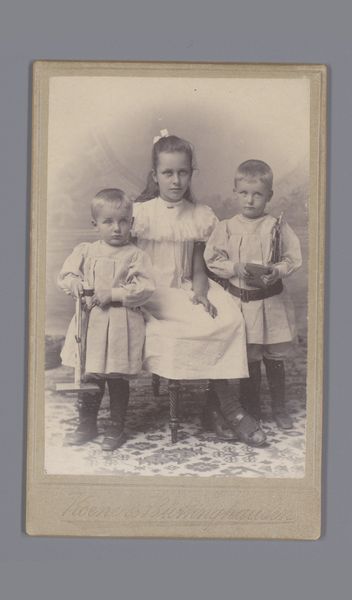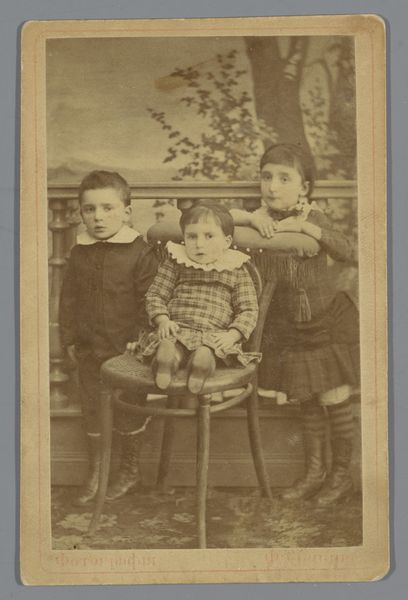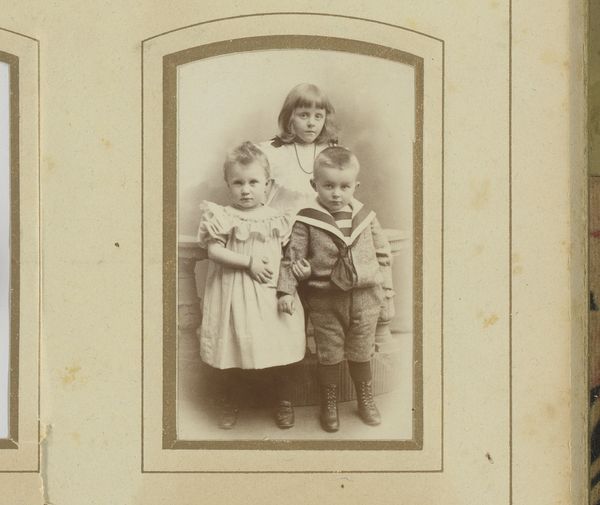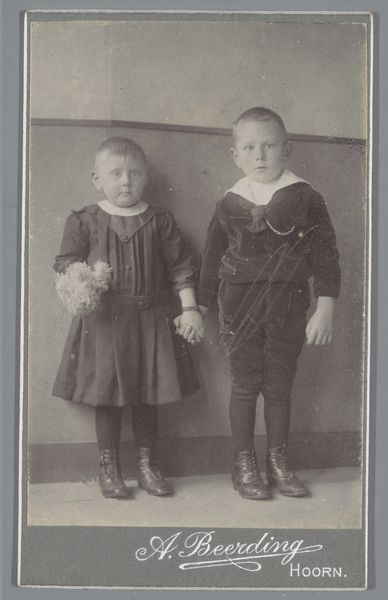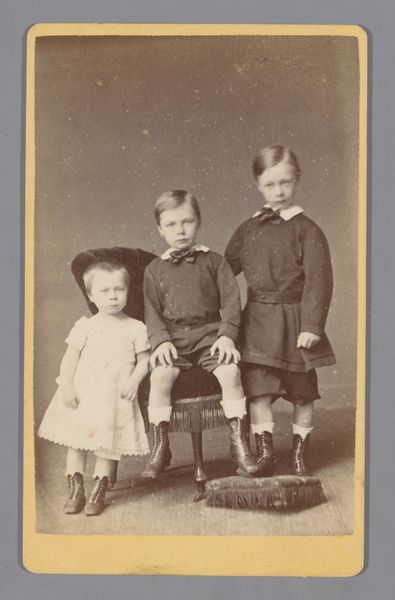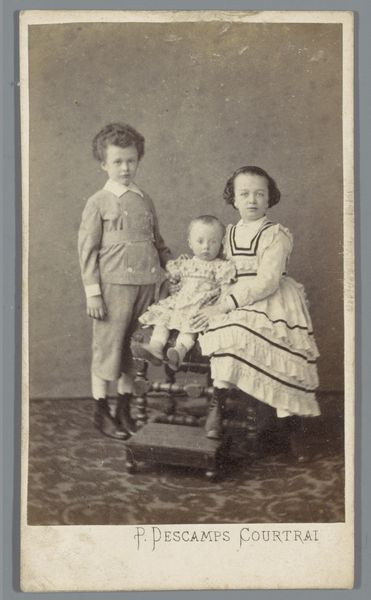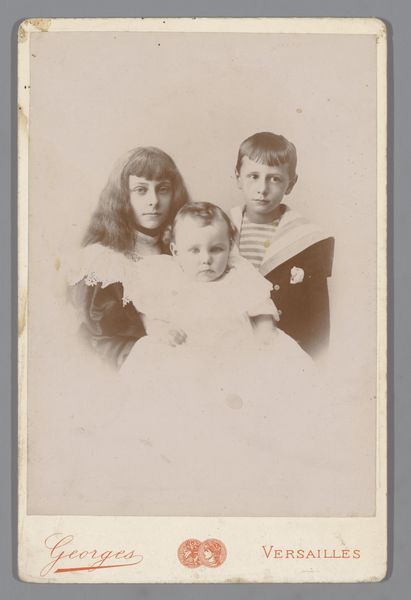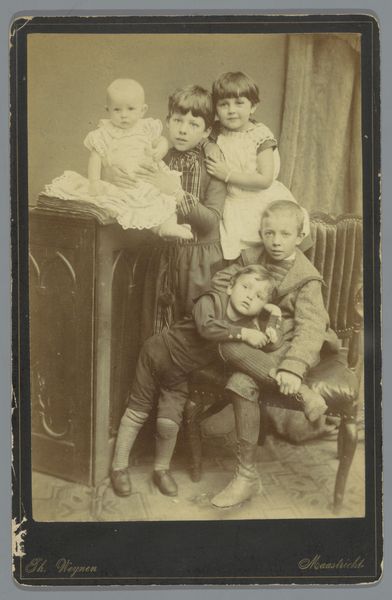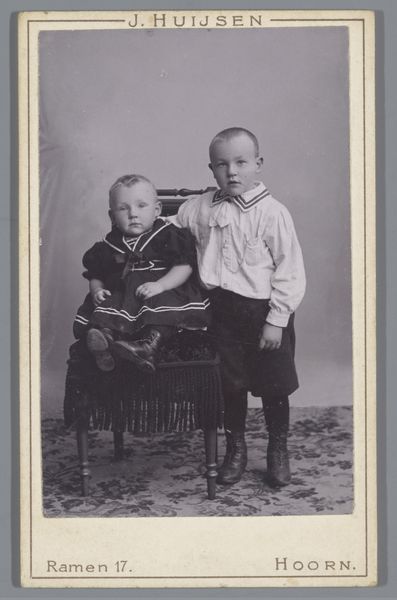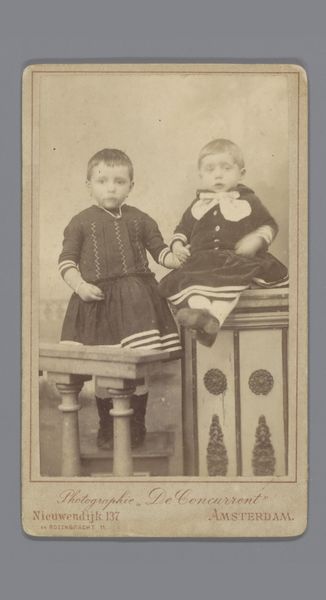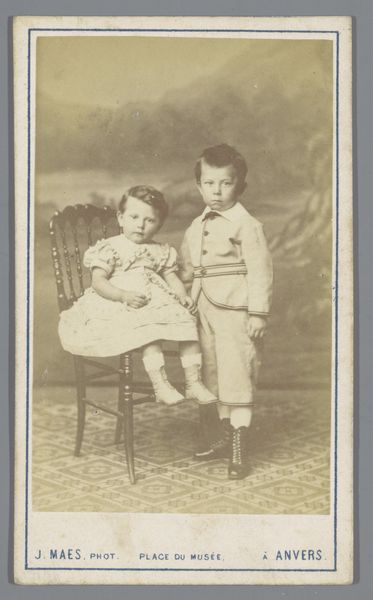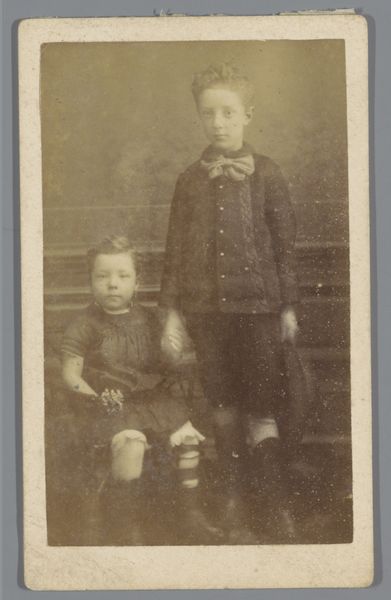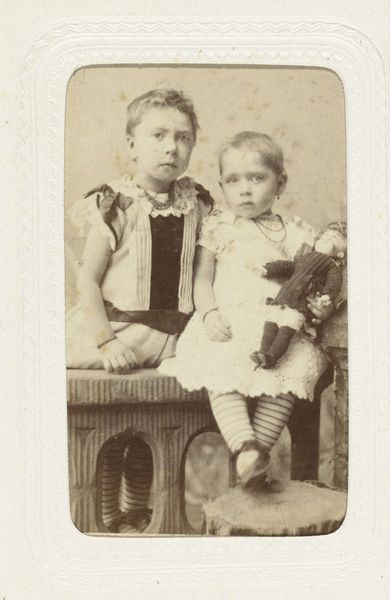
photography, gelatin-silver-print
#
portrait
#
photography
#
historical fashion
#
child
#
framed image
#
gelatin-silver-print
#
19th century
#
genre-painting
Dimensions: height 105 mm, width 65 mm
Copyright: Rijks Museum: Open Domain
Curator: Immediately, the texture grabs you, doesn't it? It's got that hazy, dreamy quality. Editor: Yes, almost like peering into the past, filtered through time. The photograph before us, entitled "Portret van drie onbekende kinderen", most likely taken between 1880 and 1891, speaks volumes about the era’s approach to documenting family and identity, even for subjects whose names remain lost to us. It's a gelatin-silver print. Curator: Right. Gelatin-silver prints were the workhorse of late 19th-century photography. Mass-produced, relatively cheap, and accessible, they changed visual culture. And yet, look at the clothing! Those stiff collars and meticulously buttoned jackets… What a production for a simple photo. Editor: It's poignant, isn't it? These clothes, a material display of status and belonging. These are not the clothes children would've played in, these are special occasion clothes. Each button tells a story of labor, both the maker of the clothes and the work of keeping them clean and mended. I bet it itched. And those boots! Curator: Indeed. The formal dress amidst what looks like a rather staged and sparse setting only enhances the stoicism of their expressions. But beyond that, there's the tangible weight of photographic material itself, that silver gelatin, bearing witness through chemical processes to create an artifact, now weathered with time, like the children in the portrait. Editor: Time touching it the way lives touch each other, altering, fading. You sense their shared world, constrained yet secure in its traditions. Look how close they are standing, even touching. Curator: Certainly. In this sense, it's also a commodity, right? Photography democratizes portraiture, and families use these images to reinforce social bonds, project respectability and so forth. It’s no longer only the upper classes. Editor: Perhaps it's my overly romantic heart, but seeing their eyes, something timeless remains, like little beacons across all these years, challenging our material-driven perspective with silent echoes of youth. I feel sadness and fondness here in equal measure. Curator: Perhaps. But those echoes, for me, prompt questions about class, labor, the rise of consumer culture... the unseen forces shaping those young lives captured in that gelatine and silver. Editor: And I find myself humbled by those small, unknowable lives, regardless of what we can analyze. Thanks to their surviving image.
Comments
No comments
Be the first to comment and join the conversation on the ultimate creative platform.
